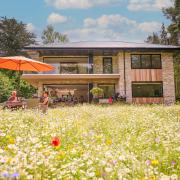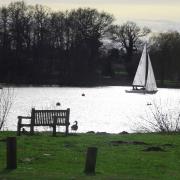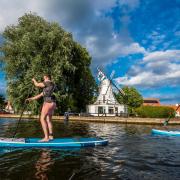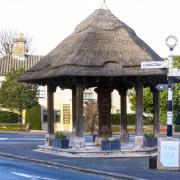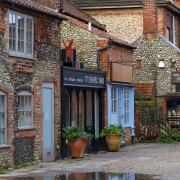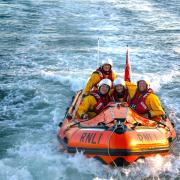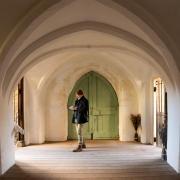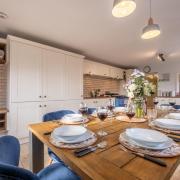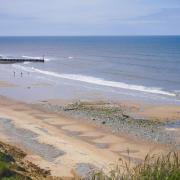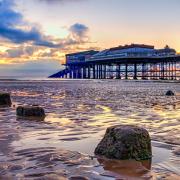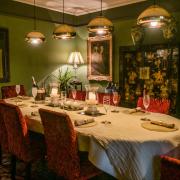King Street is one of the oldest parts of Norwich. More than a thousand years of history flows along the ancient lane.
FUGGLES
Mansions, pleasure gardens, breweries, an aircraft factory and numerous pubs and churches lined King Street through the centuries. Today it boasts the oldest surviving house in Norwich, and some of the newest.
Several Norwich breweries were based on King Street and their legacy remains in the names of new courtyards including Maltsters, Fuggles (a type of hop) and Polypin (a 36-pint cask).
The gates at adult education centre Wensum Lodge are topped with crowns, the symbol of the brewery which was once based here and its Music House is the oldest home in Norwich. In the 12th century it was home to trader and money-lender Isaac Jurnet, who is thought to have helped fund the construction of Norwich Cathedral. By the 16th century it was used by Norwich’s official musicians, the City Waits.
PRE-LOVED CHURCHES
Skateboarders can perfect their skills inside 15th century St Peter Parmentergate church. The new indoor skate park is an innovative use for the redundant church and is run as a not-for-profit social enterprise alongside the Drug Store skateboard shop. The church is managed by Norwich Historic Churches Trust and also contains a fine, and well-protected, 17th century tomb with life-size effigies of a married couple, plus canopies, obelisks, figures from myth and legend, and a cow.
Round-towered St Etheldreda church, also looked after by Norwich Historic Churches Trust was converted into artists’ studios in 1980. It has a Norman doorway and was thatched until 1883.
Medieval mystic Julian of Norwich, who was the first woman to write a book in English, lived for decades, sealed into a small room at St Julian’s church, just off King Street. From here she counselled the 14th and 15th century citizens of Norwich through plague and poverty, and wrote about the visions which inspired her book Revelations of Divine Love. Pilgrims still visit the peaceful shrine church.
PLEASURE GARDENS
A cascading waterfall, watermill, swans and a ‘sea fight with five ships and also the method of storming a castle and beautiful transparent painting representing a sea god drawn in a triumphal car’ once graced gardens which ran from the Duke of Norfolk’s Howard House, down to the river. My Lord’s Garden was eventually opened to the public as the first pleasure garden outside London - with an ever-escalating list of attractions as it vied for custom with new gardens. The house still stands but the gardens are long gone.

DRAGONS
Magnificent Dragon Hall was built for a 15th century merchant to display the fine textiles he traded and is now the headquarters of the National Centre for Writing (look out for its City of Literature events at the end of May.) One decorative dragon remains in the beams of the huge trading hall which was effectively ‘lost’ when it was subdivided over the centuries, and not rediscovered until the 20th century. Volunteers lead free tours on the third Monday of each month.
AIRSHIPS AND THE ANTARCTIC
Aircraft including airships and 2,500 military planes, plus the huts for Scott’s Antarctic expedition, were made at the huge Boulton and Paul factory which dominated the King Street area from the 19th century. Just the wall of the great Victorian factory remains, along Mountergate, but its conservatories, greenhouses, ferneries, vineries, peach houses, fountains, and pavilions still grace gardens. It made an aviary for Sandringham and even iron churches and hospitals.
Just inside the gates at Wensum Sports Centre a rather marvellous mural, painted by Walter Kershaw in 1986 to mark national Industry Year, features factories and their made-in-Norwich products sold around the world.




